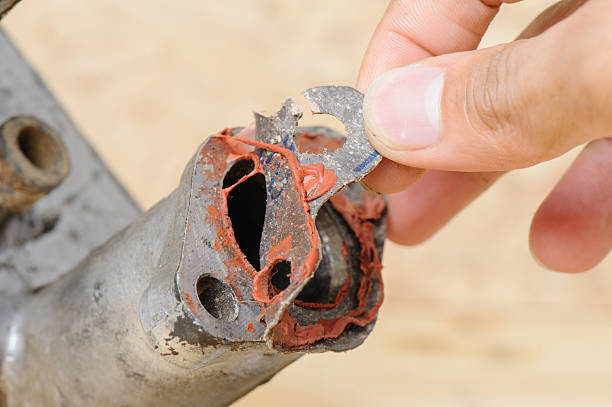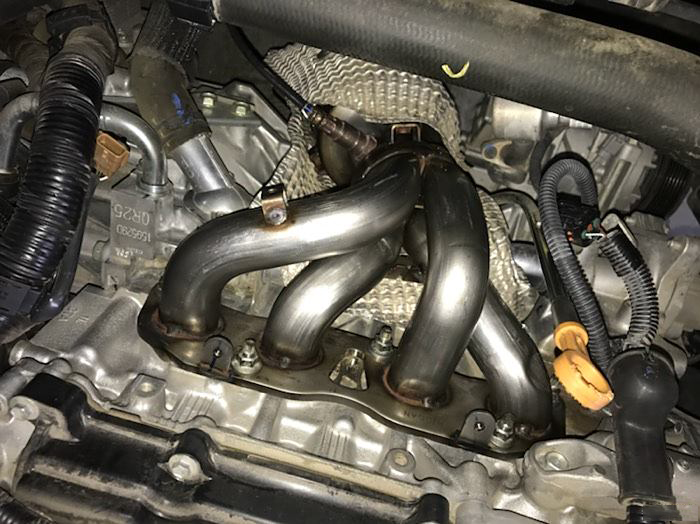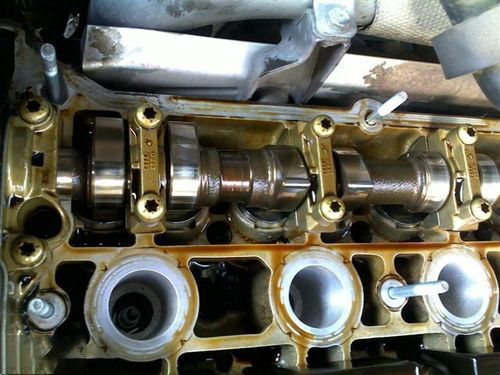Can I use sealant instead of gasket?
Imagine you are repairing an engine and suddenly find out that there is a gasket missing. But suddenly you find sealant shining in your toolbox, so you have a bold idea: Can I use sealant instead of gasket? Before you act, let’s analyze the nuances of using sealant instead of gasket.
- 1. Understanding Gaskets and Sealants
- 2. When Can You Use Sealant Instead of Gasket?
- 3. Pros and Cons of Using Sealant Instead of Gasket
- 4. Best Practices for Using Sealant as a Gasket Replacement
- 5. Common Applications Where Sealant Can Replace Gaskets
- 6. When Not to Use Sealant Instead of Gasket
- 7. Combining Gaskets and Sealants: Best of Both Worlds?
- 8. Tips for Successful Gasket Replacement with Sealant
- 9. Conclusion
Understanding Gaskets and Sealants
What is a gasket?
Gaskets are peacemakers between matching mechanical surfaces. They are preformed materials designed to fill the space between two or more surfaces to prevent leaks. Think of them as those puzzles you played in your childhood – customized according to the size of different machines to achieve a perfect fit for mechanical seals.
- Shapes, Sizes, and Materials: Gaskets come in all shapes, sizes, and materials, from paper to rubber, cork, and even metal, each designed for specific conditions, taking into account factors such as temperature, pressure, and the type of fluid or gas being sealed. So when choosing a gasket, choose it based on the specific situation.

What is a sealant?
In contrast, sealants are the putty of seals – usually liquid or semi-liquid substances that harden after being applied to form a seal. They have the versatility to fill irregular gaps, conform to surface imperfections, and even bond mating surfaces together.
- Forms and Types: Sealants come in many forms, from silicone-based products to anaerobic compounds that cure in the absence of air. Some popular types include RTV (room temperature vulcanizing) silicones, form-in-place gaskets, and thread sealants.

When Can You Use Sealant Instead of Gasket?
Now that we have briefly explained the definition, let’s get into the heart of the matter: When can sealants be used instead of gaskets? While it is not a universal solution, there are some cases where sealants can be a suitable alternative to traditional gaskets, and sometimes even work better.

Low-pressure applications
- Sealants in Low-Pressure Environments: Sealants are often more applicable in low-pressure environments. Think valve covers, oil pans, or timing chain covers. These areas don’t typically experience high pressures or extreme temperatures, making them prime candidates for sealants. The sealant’s flexibility is an advantage here, as the slightest movement or vibration of the machine won’t break its seal.
Irregular surfaces
- Sealants for Irregular Surfaces: Trying to fit a gasket onto a curved surface? That’s like trying to fit a square peg into a round hole. This is where sealants excel. Their liquid nature allows them to fill in all the nooks and crannies of an irregular surface, creating a custom seal that preformed gaskets can’t match.
Quick repairs
- Sealants for Emergency Repairs: When you’re on the road and your trusty Jeep has a leak, or you’re working on a repair project and don’t have the right gasket. In these situations, a quality sealant can be a real lifesaver, getting you back to work after the repair.
Pros and Cons of Using Sealant Instead of Gasket

Advantages of using sealant
- Versatility: Sealant is highly adaptable and can adapt to a wide range of irregular contours and surfaces. This plasticity is particularly beneficial for complex designs that are difficult for gaskets to handle.
- Cost-effectiveness: From a price perspective, sealants are often a more favorable choice because a single sealant can replace the total cost of multiple specialized gaskets, thereby reducing expenses.
- Time savings: Using sealants can eliminate the laborious work of cutting and shaping gaskets, simplifying the assembly process to a simple application and assembly, which proves its time-saving efficacy.
- Customizability: The thickness of the sealant can be adjusted to specific requirements. The sealing solution can also be customized according to the size of the gap.
- Reusability: Unlike gaskets that lose integrity after compression, many sealants can be removed and reapplied, so they can be repaired repeatedly when the repair effect is not satisfactory.
Disadvantages of using sealant
- Complex application: Compared with the precision required for gasket installation, the deployment of sealants usually requires a more cumbersome procedure and requires additional work.
- Curing time: While gaskets can be used immediately after replacement, sealants require a curing interval, and people don’t always have time to wait.
- Insufficient pressure resistance: Many sealants cannot withstand the pressures that high-pressure gaskets are designed to withstand, so they are not well suited for special environment applications.
- Temperature sensitivity: Some sealants tend to crack under extreme thermal conditions, while some gaskets can withstand such harsh temperatures.
- Risk of overuse: Improper use of sealants can lead to overuse, which can cause blockages and contamination. Correcting such accidents is often more complicated than using gaskets directly.
Best Practices for Using Sealant
After considering the advantages and disadvantages, if sealants are selected, they must be used with precision. Here, we offer some wise suggestions to ensure that the sealant’s effectiveness is comparable to that of traditional gaskets.

Choosing the right sealant
The selection process must be guided by the specific needs of your application. Consider the following parameters:
- Temperature range: Will the sealant be affected by extreme thermodynamic conditions?
- Chemical resistance: What substances will the sealant come into contact with?
- Pressure Tolerance: What pressures will the sealant be expected to withstand?
- Cure Schedule: How urgent is the sealant to be put into service?
Typically, RTV silicones are chosen for their versatility, anaerobic sealants for their metal-to-metal adhesion, and high-temperature silicones for engine applications.
Surface preparation
The creation of an effective seal depends on cleanliness. Follow the following surface preparation process:
- Remove all traces of previous gasket material or sealant.
- Degrease the surface with a degreaser or solvent.
- Dry the surface before applying a new sealant.
- For anaerobic sealants, consider using a primer on non-metallic surfaces.
Application techniques
Proper application is essential for a leak-proof seal:
- Apply a continuous, curved bead of sealant that adheres to the topography of the surface.
- For most applications, a bead width of 1/8 to 1/4 inch is generally considered adequate.
- Pay special attention to bolt holes—close them with sealant, but do not introduce sealant into the hole.
- Assemble components immediately after application to prevent peeling from starting.
- Tighten the bolts in a staggered pattern to ensure even compression.
Where Sealant Can Replace Gaskets
While not suitable for every situation, there are many common automotive and mechanical applications where sealant can effectively replace traditional gaskets:
Valve covers
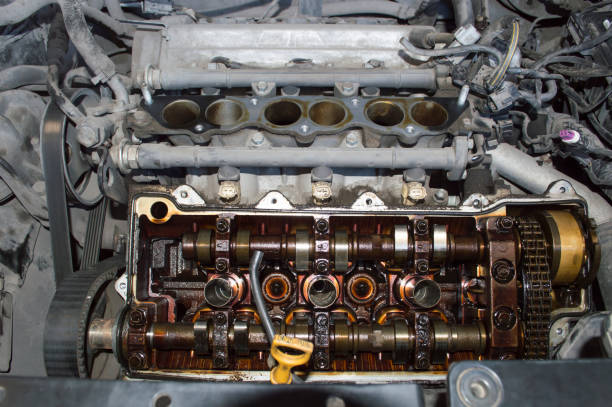
- Valve covers protect the engine’s valve train components. They work in a low-pressure area. Traditional gaskets may not be the best choice here because they need even pressure. Sealants, like RTV silicone, work well. RTV silicone cures at room temperature and sticks well. It can move with the engine’s heat and stay sealed even if the surfaces are not flat. This is better than gaskets, which can fail if surfaces are not even.
Oil pans
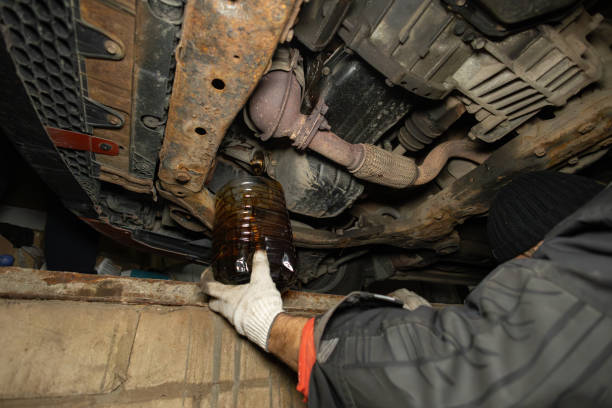
- Oil pans hold the engine’s oil. They touch the engine block’s uneven surfaces and work under low pressure. Many mechanics like RTV silicone sealant for oil pans. It sticks well to uneven surfaces and fills gaps. This stops oil leaks. Good RTV silicone also resists oil and other chemicals, so it lasts a long time.
Timing covers
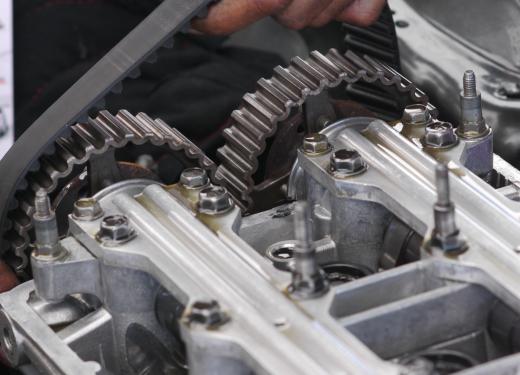
- Timing covers protect the timing chain or belt. This is important for engine parts to work together. Like valve covers and oil pans, timing covers have low pressure and no extreme heat. A thin line of sealant can work better than a gasket here, especially on older engines. Over time, timing cover surfaces may warp or wear. Sealant fills these gaps and makes a good seal. Sealants can shape to the surfaces they seal, but gaskets need exact sizes.
When Not to Use Sealant Instead of Gasket
Both gaskets and sealants can seal the mechanics of your car, but they work best in different situations. Gaskets are best used in the following situations:

High-pressure systems
- In parts of your car that are under a lot of pressure, such as around the cylinder head or in the fuel system, gaskets are generally better.
- Gaskets are designed to handle a certain level of pressure and maintain a good seal.
- They provide even pressure, which is important for parts that need a strong, leak-free seal.
High-Temperature Parts
- Some sealants can withstand heat, but extremely high temperatures can damage many sealants over time.
- Very hot parts, such as exhaust manifolds, often require special gaskets.
- These gaskets are made of materials that can withstand a lot of heat without wearing out and can maintain a good seal.
Parts that require precise spaces
- Some engine parts need the proper amount of space between them, which requires a gasket of a certain thickness.
- Using sealants can change these important measurements and cause problems.
- For example, an engine’s cylinder head gasket must be a certain thickness to maintain the correct distance between the parts.
- If you use a sealant, the thickness may not be the same, which can cause problems with engine operation.
Combining Gaskets and Sealants

Gaskets and sealants work together
- Gaskets maintain a constant thickness and pressure, ensuring that there will be no leaks when the engine is pressurized. Sealants are flexible and can fill small gaps or uneven areas, forming a strong seal even if the surface is uneven.
- So in our daily maintenance, we might as well consider using both materials at the same time: reliable seals can handle small surface problems and maintain proper space between parts.
Matching of gaskets and sealants
- First of all, it is important to know that not all gaskets are suitable for sealants. If the materials are incompatible, it may cause the seal to fail or damage engine parts. Always check the manufacturer’s recommendations before using them together. This step is key to making the seal durable, working well, and ensuring the safety of the engine.
Tips for Successful Gasket Replacement with Sealant
Using Sealant Sparingly
- When you use sealant instead of a gasket, it’s important to use just the right amount. The saying “less is more” applies here. It’s easier to add a little more sealant if you need it than to fix it if you use too much. Sealant, once applied, cannot be taken back, so be careful and use it precisely.
Waiting for Sealant to Set
- After applying sealant, you must wait for it to set before you can use the part. Don’t rush; let the sealant fully cure. This is the time when the sealant changes from a liquid to a solid state, which is important for it to work well under the pressure inside the engine. Skipping this step can lead to a weak seal or engine part failure.
Tightening the Right Way
- When you put parts together with sealant, follow the instructions for how tight to make them. If you make them too tight, you can push out the sealant, and if you make them too loose, the seal won’t be strong. It’s a balance, and you need to do it just right to make sure the seal is good.
Planning for Future Work
- Some sealants create very strong bonds, which is good for sealing but can make it hard to take things apart later. If you need to check or fix something in the future, choose a sealant that is strong but not too hard to remove.
Keeping Things Clean
- When you apply sealant, keep it and your tools clean. Dirt or oil can make the sealant not work well, causing leaks or damage. Make sure everything is clean to keep the seal strong.
Conclusion
In summary, the purpose of selecting gaskets and sealants is not just to prevent leaks, but also to select the most effective and efficient solution for your specific situation. By taking a pragmatic approach, you can optimize repairs and maintenance, saving time, money and effort in the long run.




